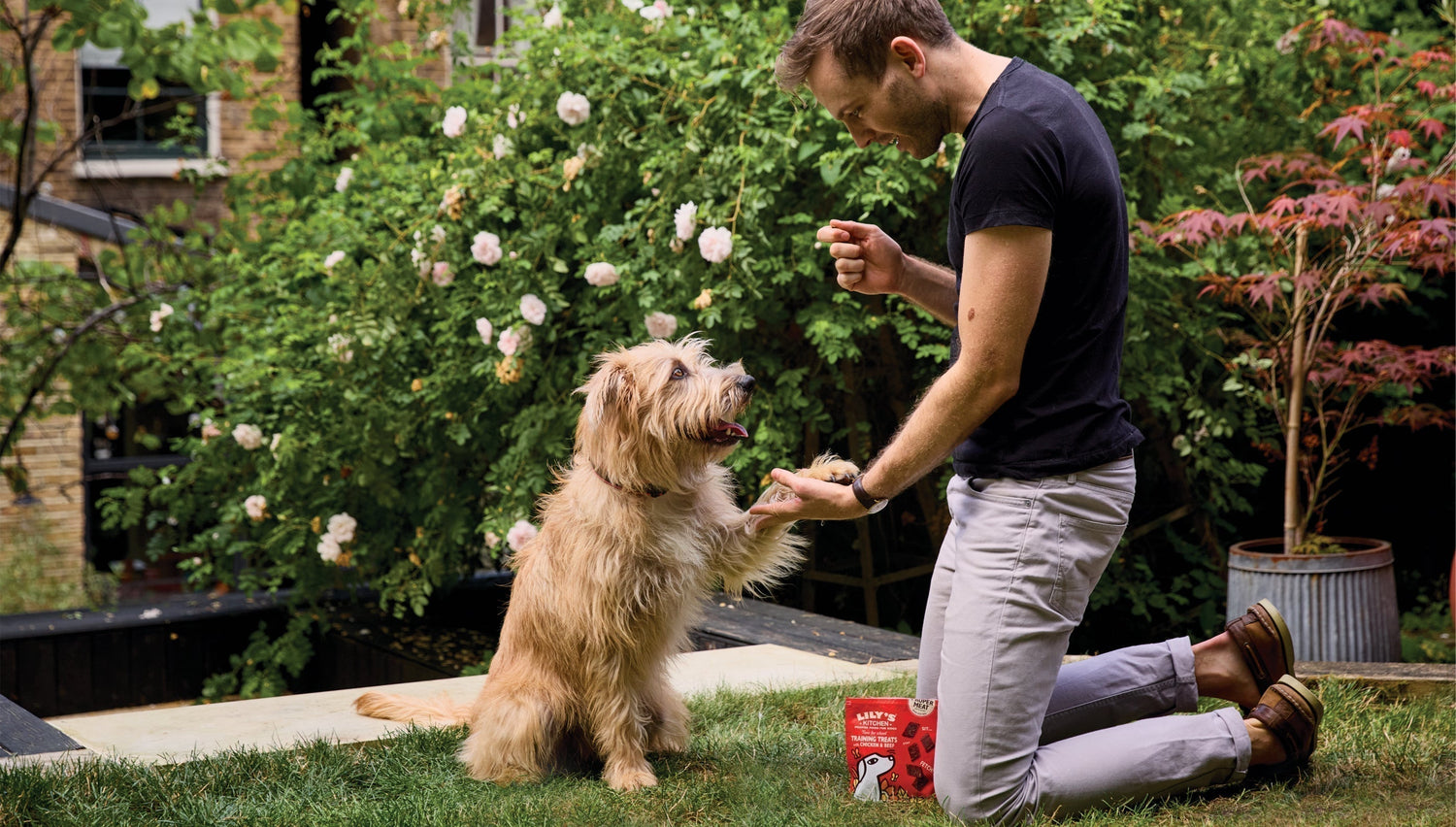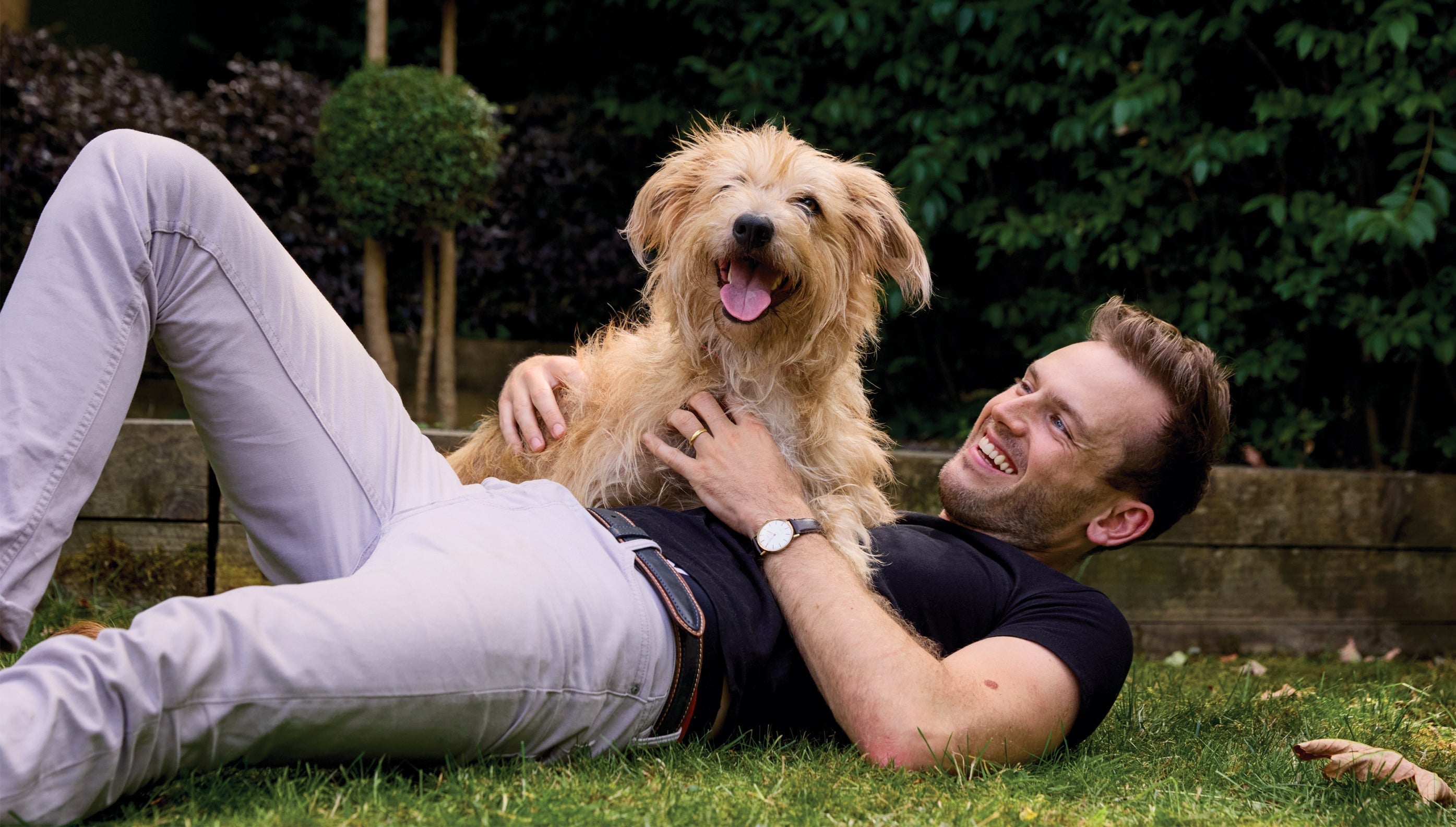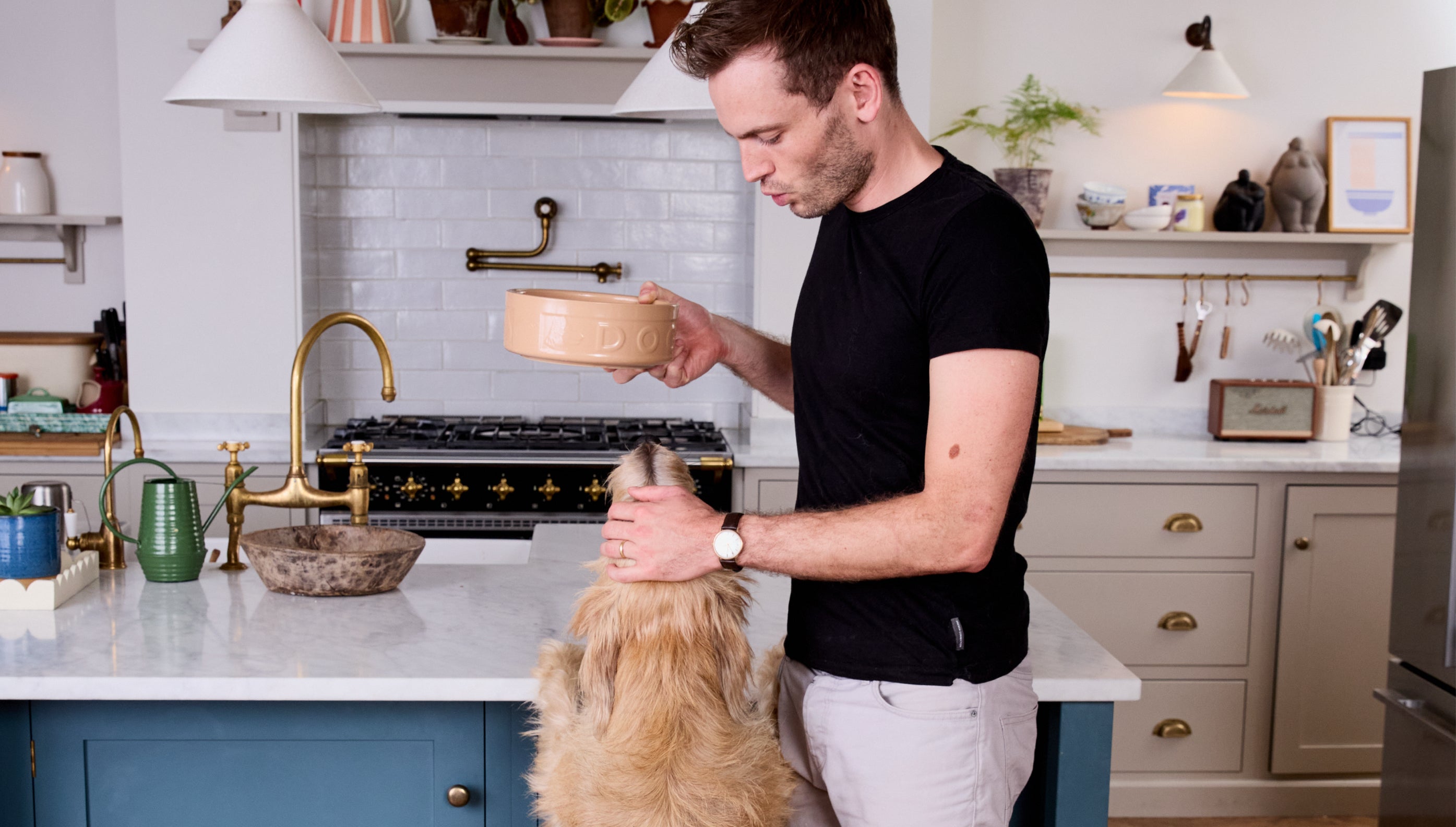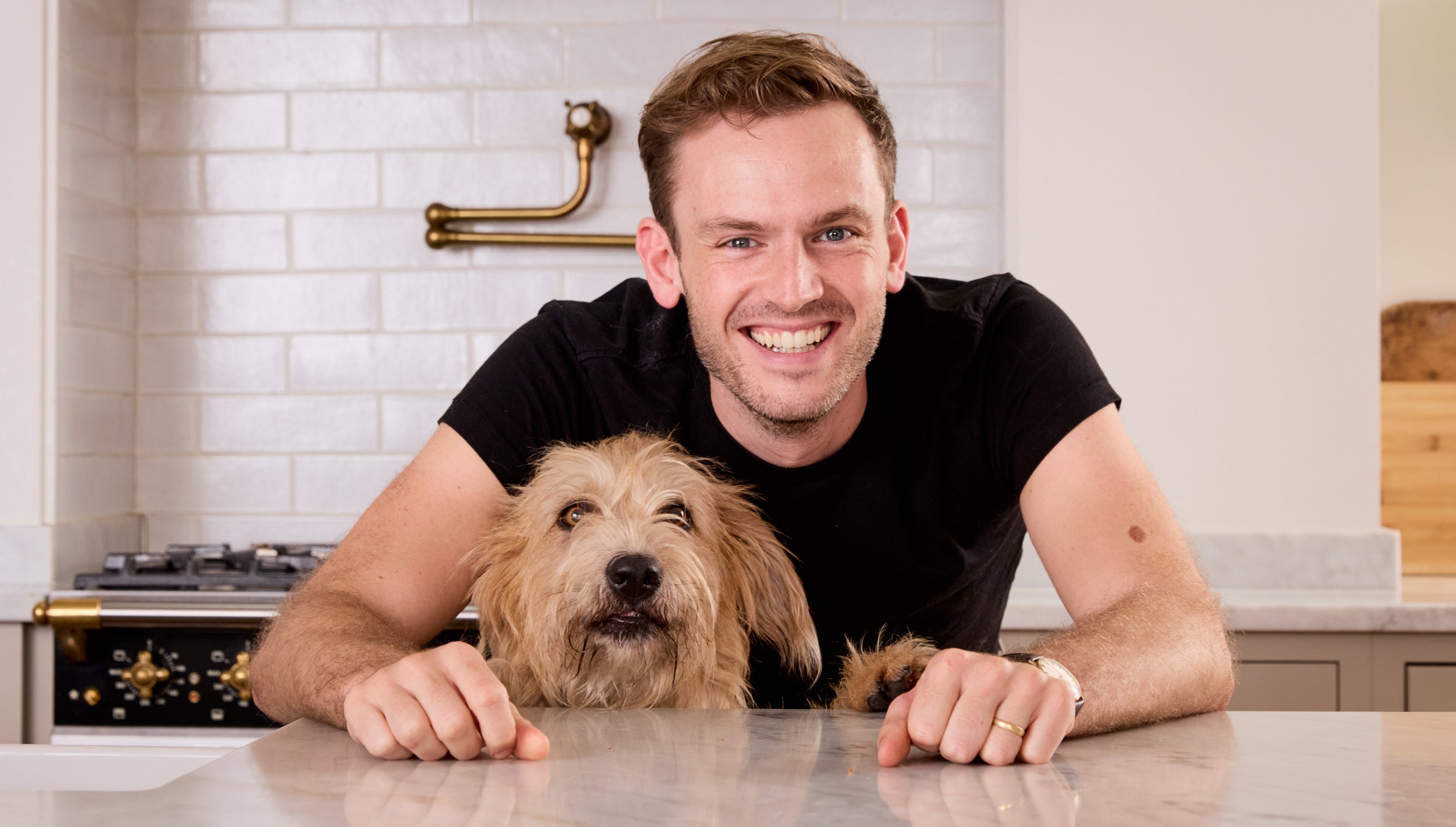We asked pet expert Rory the Vet for his advice.
A well-behaved dog is a happy dog. One that is able to go anywhere and take part in life as much as possible. Which is why it’s super important to train your furry friend to learn the basics. Here, I’ve provided a step-by-step guide on dog training so that your pooch can go on to live their best life with you by their side.
MEET RORY THE VET

We’ve partnered up with animal whisperer and renowned veterinarian, Dr Rory Cowlam, to share his wisdom when it comes to all things furry. And boy, does this man know his stuff.
Starting with his degree from the Royal Veterinary College, Rory has since co-starred in the CBBC’s series The Pet Factor, shared his knowledge on the likes of Blue Peter and written all about it in his book, Secret Life of a Vet.
Follow him on Instagram
Key things to remember when training your dog
Consistency and patience are key.
Remember that it’s a gradual process—changes won’t happen overnight.
Positive reinforcement.
Dogs respond best to positivity, so don’t scold your dog if their behaviour doesn’t immediately meet your expectations.
There are such things as high value treats and low value treats.
Train frequently and in short bursts.
Just like us, dogs have an attention span, and it’s often quite short!
Basic Commands
The main basic commands your dog needs to learn are: paw, stay and come. Here are some tips to help you get started.
Sit
This is usually the first command we teach our dogs. I like to make them sit for everything, whether it’s before they eat, before you head outside (and need to put their lead on), before you cross the road... It keeps their attention on you and can be a great base for training.
To teach your dog to sit on command, get a treat, hold it over their head and move it back until their bottom naturally sits, all while saying “sit” in a clear voice. If they don’t, guide them with a gentle helping hand the first few times.

Stay + Come
These come after your dog has successfully learned how to sit. Your dog will learn both commands “stay” and “come” with this technique. The key here is to teach them in a spot where there are ZERO distractions.
Firstly, tell your dog to sit. Then, stay. Slowly pace backwards, create some distance between you, stop, then call their name or shout “come!”. You can use hand gestures to help attract their interest. Praise them when they come to you and offer rewards. Now, repeat the process, slowly increasing the distance between you each time. Once this is nailed, you can practice in a place where there are distractions, like other dogs and tasty food.
Lead Training
This can be really tricky, especially with an excitable pup. There are many different techniques when it comes to teaching your dog how to walk on a lead. This is my preferred method:
Whenever your dog pulls on the lead, stop. Command them to sit, and then set off in a different direction. You won’t get anywhere in terms of the walk, but it works pretty well! After a while of doing this, your dog should start following your lead.

How to house train your puppy
Puppies poo and pee CONSTANTLY. Crate training can be really useful to help with this. I would not recommend using puppy pads. Instead, if you notice your pup is about to pee, carry them to the spot you ideally want them to do it in. If it’s not possible to keep going outside whenever your pup needs to go, then using real grass patches are a great way for them to get used to peeing on grass while inside. Make sure to highly praise your puppy and give them plenty of treats whenever they go in the correct spot. Establishing this routine and keeping to it will really help your puppy become house trained.
Clicker training: what it is and how to do it
Clicker training can be a really effective way to train your dog to do most things. The idea is to offer your furry friend a treat immediately after every click to help your dog associate the sound with a reward. This can be more successful than vocal praise.
Once your dog has learned to anticipate a treat after every click, start introducing the clicker whenever they show good behaviour. For instance, if your dog knows how to obey “sit”, as soon as they do, click and reward them with a treat. Practice until it is clear your dog understands the clicker’s purpose (they will look for the treat whenever the sound is made). Now you can use the clicker to teach your dog new skills!
The information in this article is intended as a guide to help pets and pet parents on their journey together. It is provided for educational and informational purposes only and is not meant as a substitute for professional advice from a vet, behaviourist, trainer or other professional. We encourage all pet parents to consult with their vet and/or behaviourist to ensure their pet’s specific needs are met.





